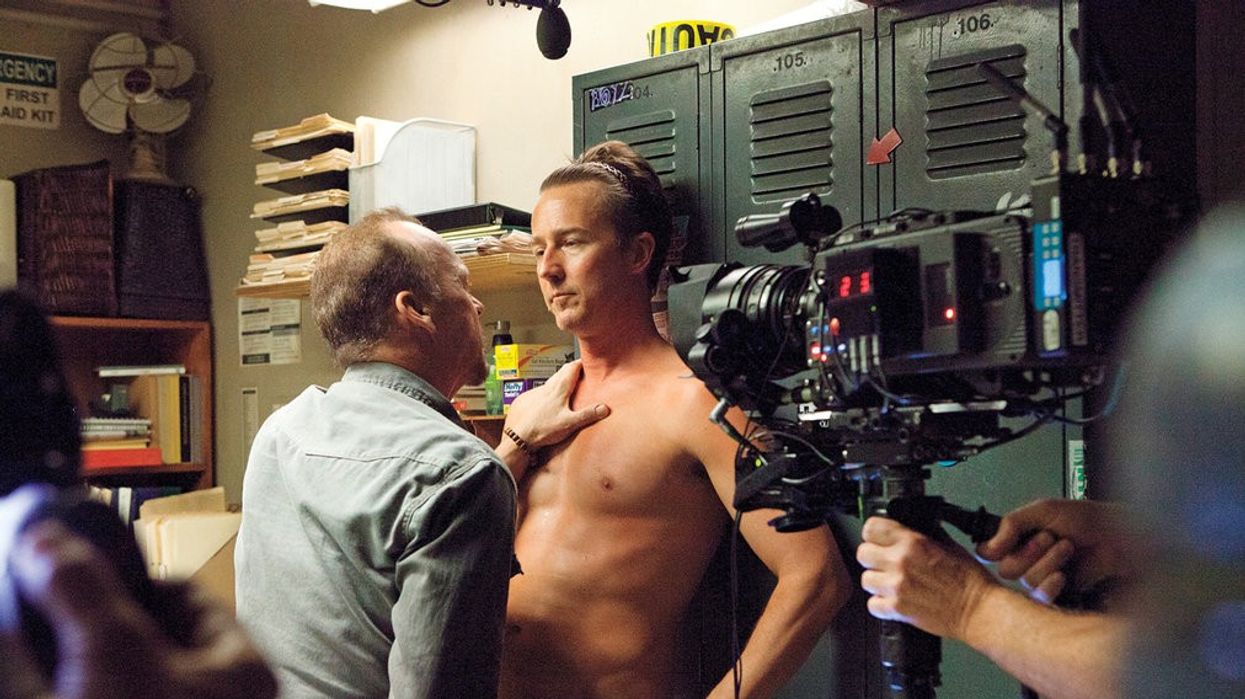What is a Handheld Shot?
A gimbal isn't much use if you don't know what to do with it.

An example of a handheld shot from Birdman (2014)
When you break it down, the art of filmmaking is really just a series of shots and edits. There can be a lot to learn, but the basics will always be the same. That's why it's important to thoroughly understand the different types of camera shots and angles.
In this episode of 4 Minute Film School, Aputure's Ted Sim talks with Casey McBeath, a professional gimbal operator, about seven basic camera moves you can do with your gimbal to make your shots look more cinematic.
What is a Handheld Shot?
A handheld shot is a filmmaking technique where the camera is held by the operator rather than being mounted on a tripod or other stabilizing device. This technique often results in a slightly shaky or unstable image, which can create a sense of immediacy, realism, or intensity.
Handheld shots are frequently used in documentaries, news footage, and certain genres of fiction films, such as action, horror, and found-footage films.
Uses and Characteristics of a Handheld Shot
- Shaky or Unstable Image: The most noticeable aspect of a handheld shot is the slight shakiness caused by the operator's natural movements. This can create a sense of realism, as if the viewer is seeing events unfold in real time.
- Immediacy and Intensity: The instability of the handheld shot can also create a feeling of immediacy and intensity, making the viewer feel more involved in the action.
- Flexibility and Mobility: Handheld shots allow the camera operator to move freely and follow the action, making them well-suited for dynamic situations.
- Documentary Style: Handheld shots are often associated with documentaries, as they create a sense of realism and authenticity.
- Found-Footage Style: In found-footage films, handheld shots are used to create the illusion that the footage was shot by an amateur or non-professional, adding to the film's sense of realism.
What Kind of Moves Can You Do with a Handheld Shot?
While handheld shots can be very effective, they can also be distracting or disorienting if overused. The decision to use a handheld shot should be carefully considered based on the desired effect and the overall style of the film.
Here are the seven camera movements mentioned in the video:
- The push in/pull out
- The boom shot
- The truck/dolly shot
- The follow/lead shot
- The orbit
- The rotate
- The tilt
Though McBeath talks specifically about camera moves for gimbals, I think they work with all handheld moves as well, whether they be shot with sleds, monopods, full arm and vest systems, or even no stabilizer at all.
The purpose, though, of learning about all of these kinds of shots is not just to have an arsenal of fancy camera moves. It's to understand how they can be used to tell your story. For instance, after gimbals came out in 2013, it seemed as though 90% of music videos, shorts, and promotional videos were made up of orbit shots, but many times those orbit shots seemed a little out of place or superfluous because they didn't serve the story—a classic "Just because you can doesn't mean you should" thing.
But McBeath explains the psychological effects of each shot, as well ideal occasions in which to use them in your projects. So, test them out, practice them, and make up new one to help make your story more interesting to watch.
Source: Aputure
- The Key to Good Camera Movement: Motivation ›
- Tips and Tricks from 'The Office' Cinematography ›
- No Rig? No Problem. Handheld Footage with the Blackmagic Cinema Camera ›











